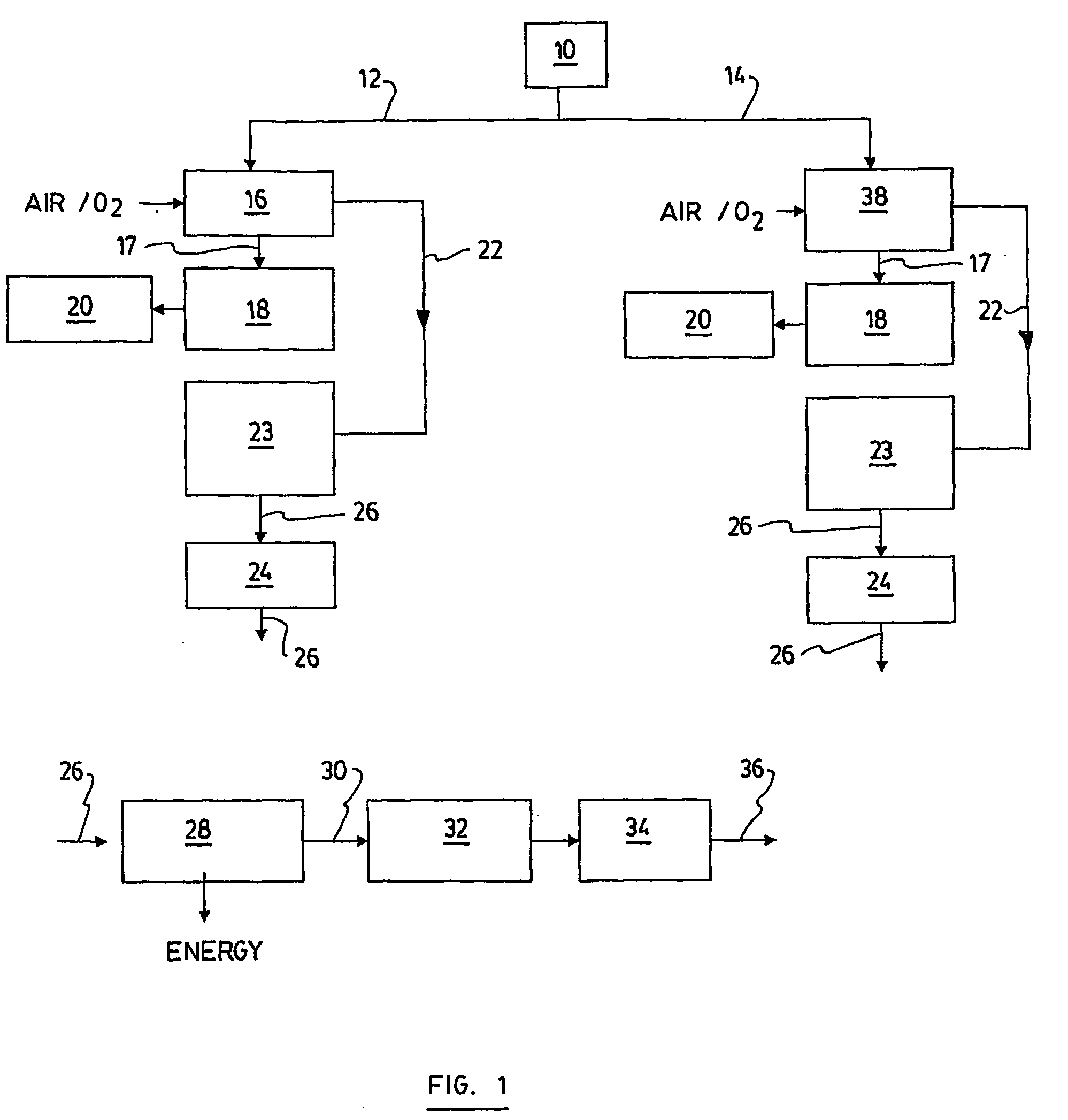Process and a plant for recycling carbon dioxide emissions from power plants into useful carbonated species
- Summary
- Abstract
- Description
- Claims
- Application Information
AI Technical Summary
Benefits of technology
Problems solved by technology
Method used
Image
Examples
Embodiment Construction
[0041]FIG. 1 shows a flow sheet where a biological process is integrated to energy generation processes.
[0042] In this diagram, the nature of the fossil fuel (10), either coal (12) or natural gas (14), used to power the plant leads to two different branches.
[0043] In the case of coal (12), the fuel is burned in a combustion chamber (16); the heat (17) is used to produce steam from water in a heat recovery steam generator system (18). The steam propels turbines and alternators (20) producing electric power. The flue gas (22) exiting the combustion chamber (16) is treated to remove ash, NOx and / or SO2 (23). In the current configuration of power plants, the gas is finally exhausted by a stack (24).
[0044] In the context of this invention, the gas (26) is not exhausted at this stage, but rather sent to additional heat exchangers and energy recovery systems (28) to cool it down to an adequate temperature for the biological process. Energy is produced by this step. The cooled gas (30) i...
PUM
 Login to View More
Login to View More Abstract
Description
Claims
Application Information
 Login to View More
Login to View More - R&D
- Intellectual Property
- Life Sciences
- Materials
- Tech Scout
- Unparalleled Data Quality
- Higher Quality Content
- 60% Fewer Hallucinations
Browse by: Latest US Patents, China's latest patents, Technical Efficacy Thesaurus, Application Domain, Technology Topic, Popular Technical Reports.
© 2025 PatSnap. All rights reserved.Legal|Privacy policy|Modern Slavery Act Transparency Statement|Sitemap|About US| Contact US: help@patsnap.com



